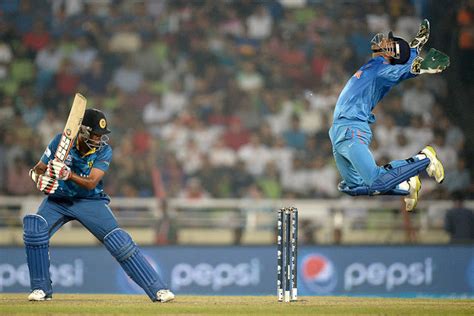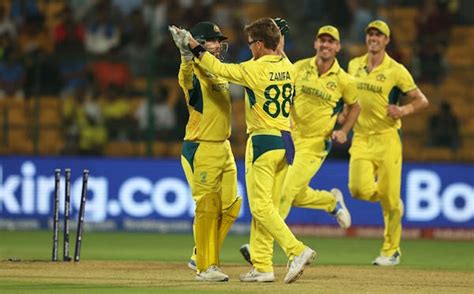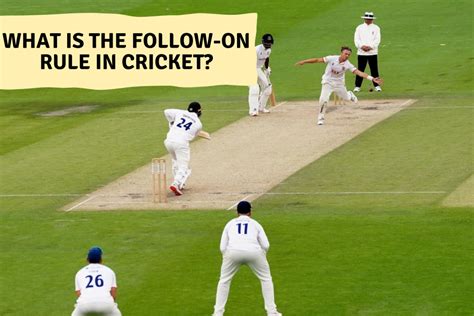Explore the essential role of the wicketkeeper in cricket, including responsibilities, training techniques, impact on team strategy, and future trends.The Role Of The Wicketkeeper In Cricket
Cricket is a game steeped in tradition, yet the nuances of each player’s role can often be overlooked. Among these, the wicketkeeper stands out as a multifaceted player who blends agility, reflexes, and tactical acumen. Far beyond just standing behind the stumps, the wicketkeeper is an integral part of the team dynamic, influencing both gameplay and strategy. In this article, we delve into the pivotal role of the wicketkeeper in cricket, highlighting their key responsibilities during matches, the essential training techniques for skill development, and the profound impact they have on team strategy. Additionally, we will explore the future trends that are shaping the role of wicketkeepers in modern cricket. Whether you’re an aspiring cricketer or a dedicated fan, understanding this unique position will enhance your appreciation of the game.
Understanding The Role Of The Wicketkeeper In Cricket
The role of the wicketkeeper is pivotal in the game of cricket, serving as the backbone of the team’s defense. Positioned behind the stumps, the wicketkeeper’s responsibilities extend beyond merely catching the ball. They are integral to the team’s strategy and can significantly influence the course of a match.
Firstly, the wicketkeeper is the primary line of defense against the opposing batsman. They must possess quick reflexes and agile movements to successfully catch or stump batsmen. This requirement is crucial during both fast and spin bowling, where the speed and spin of the ball can create challenging scenarios.
Moreover, the wicketkeeper plays a vital role in communication on the field. They often act as a liaison between bowlers and fielders, offering strategic advice and positioning based on their observations from behind the stumps. This communication aids in implementing effective field placements and adapting strategies in real-time, thus enhancing the team’s overall performance.
Additionally, wicketkeepers must maintain a mental edge, anticipating the batsman’s moves and understanding the bowler’s strategy. Their ability to read the game can lead to decisive moments, such as executing a stumping or a catch that turns the tides of a match. This aspect highlights the importance of decision-making skills in the role of a wicketkeeper.
In modern cricket, the responsibilities of the wicketkeeper have evolved to include batting prowess. Many wicketkeepers are now also skilled batsmen, contributing significantly to the team’s total runs, especially in limited-overs formats. Thus, the role of the wicketkeeper extends beyond just defending wickets; it encompasses a multifaceted contribution to the team’s success.
Understanding the role of the wicketkeeper involves recognizing their challenges on the field, their importance in communication and strategy, and their dual function as both a defender and a contributor to the batting lineup. Their unique position allows them to have a profound impact on the flow of the game, underscoring why this role is essential in cricket.
Key Responsibilities: The Role Of The Wicketkeeper During Matches
The role of the wicketkeeper is pivotal during any cricket match, acting as a central figure in both defense and strategy. Here are the key responsibilities a wicketkeeper undertakes throughout the game:
Overall, the wicketkeeper’s position is not just about standing behind the stumps but encompasses a strategic understanding of the game that can greatly impact the team’s performance. Mastering these responsibilities enhances the overall efficacy of the role and contributes to the team’s success on the field.
Developing Skills: Training Techniques For Wicketkeepers
To excel in The Role of a wicketkeeper, players must undergo rigorous training that enhances both their physical abilities and mental resilience. Here are some essential training techniques that can help wicketkeepers develop the necessary skills:
- Footwork Drills: Quick and agile footwork is crucial for a wicketkeeper. Practicing lateral movements, forward and backward sprints, and quick pivots can greatly enhance reaction times and positioning behind the stumps.
- Catching Practice: Regular catching drills using various techniques such as high catches, low catches, and one-handed catches will improve hand-eye coordination and reflexes. Use tennis or rubber balls for a quicker response challenge.
- Stumping Drills: Practicing the stumping process, including quick ball collection and swift foot movement towards the stumps, is vital. Incorporate specific drills where bowlers deliver varying speeds to simulate match situations.
- Shadow Keeping: To refine technique without the pressure of a game, practice shadow keeping. This involves mimicking the movements and positions of a wicketkeeper while focusing on form and foot positioning.
- Game Simulation: Engage in practice matches where wicketkeepers can apply their skills in a realistic setting. This involves working on quick decision-making and adapting to different types of bowlers and game scenarios.
- Mental Conditioning: As the role involves intense pressure, mental conditioning techniques such as visualization, breathing exercises, and mindfulness can help keep a wicketkeeper focused and composed during critical moments of the game.
Consistent practice of these techniques, combined with feedback from coaches, will significantly enhance the abilities of wicketkeepers, enabling them to fulfill The Role effectively during matches.
The Impact Of The Wicketkeeper’s Role On Team Strategy
The wicketkeeper plays a crucial role in shaping a team’s strategy on the cricket field. Their unique position allows them to influence various aspects of the game, both defensively and offensively. Understanding the role of the wicketkeeper can help teams optimize their performance and gain a competitive edge.
One of the most significant impacts of the wicketkeeper’s role is their involvement in the decision-making processes during a match. They are positioned behind the stumps, providing them with an excellent view of the entire field. This vantage point allows them to communicate effectively with bowlers and fielders, offering suggestions on placements and strategies based on the batsman’s tendencies.
Moreover, the wicketkeeper’s ability to take quick decisions and make accurate stumpings can create vital turning points in a match. A well-timed dismissal can not only shift the momentum but also instill confidence in the bowling unit. In this respect, the role of the wicketkeeper extends beyond just catching or stumping; it is deeply entwined with the psychological aspect of team strategy.
Additionally, wicketkeepers are often the first line of defense against aggressive batting. Their skill in reading the game allows them to anticipate runs and signal for field adjustments, which can minimize scoring opportunities for the opponents. This strategic foresight is essential in tight matches where every run counts.
Furthermore, modern cricket has seen the rise of wicketkeepers who contribute significantly with the bat. Their role has evolved from merely a defensive position to a dynamic added value in the batting lineup. This shift means that teams often strategize around their wicketkeeper’s batting abilities, using them as finishers or aggressive players who can shift the dynamics of an innings.
| Wicketkeeper Strategies | Impact on Team |
|---|---|
| Adjusting Field Placements | Minimizes scoring opportunities |
| Providing Quick Feedback | Enhances bowling performance |
| Launching Counterattacks | Boosts batting order strength |
The role of the wicketkeeper is integral to a team’s tactical framework. By leveraging their skills, judgement, and communication abilities, teams can elevate their performance and respond effectively to the challenges posed by their opponents.
Future Trends: Evolving The Role Of The Wicketkeeper In Cricket
The role of the wicketkeeper in cricket is undergoing significant evolution. As the game progresses, the expectations for wicketkeepers extend beyond traditional duties, incorporating new skills and responsibilities that align with modern cricket dynamics.
One of the emerging trends is the need for wicketkeepers to become more adept at using technology. With the prevalence of analytics and data-driven strategies, wicketkeepers are now expected to contribute insights based on video analysis of opponents. This includes recognizing batting patterns and adjusting their positioning accordingly, which enhances the team’s overall fielding strategy.
Additionally, the physical fitness requirements for wicketkeepers are becoming more demanding. They must maintain agility and quick reflexes to respond to fast deliveries while also being fit enough to withstand the physical toll of crouching for long periods. This is leading to a shift in training regimens, focusing on high-intensity interval training and plyometrics to boost their performance levels.
Another trend is the wicketkeeper’s role in the batting lineup. As teams look to maximize scoring, wicketkeepers are increasingly being groomed to play a more aggressive batting style. This results in wicketkeepers becoming key players in the middle-order, where their ability to accelerate the scoring rate can be a game-changer.
Furthermore, the psychological aspect of the role is gaining attention. Wicketkeepers today are not just players but also leaders on the field. They play a crucial part in motivating teammates and maintaining morale, especially during tough matches. This leadership quality is being prioritized in training and selection processes.
As the game continues to evolve, the role of the wicketkeeper is poised for further transformation, reflecting changes in technology, fitness, and strategy that will shape the future of cricket.
Frequently Asked Questions
What is the primary role of a wicketkeeper in cricket?
The primary role of a wicketkeeper is to catch the ball behind the stumps, prevent runs from being scored, and dismiss batsmen through catches, stumpings, and run-outs.
How does a wicketkeeper contribute to the team’s strategy?
A wicketkeeper plays a crucial role in forming strategies by working closely with the bowlers, making decisions on field placements, and communicating with teammates concerning game tactics.
What skills are essential for an effective wicketkeeper?
Essential skills for an effective wicketkeeper include excellent hand-eye coordination, agility, strong reflexes, quick decision-making abilities, and good communication skills with the bowlers.
What are some common methods of dismissal involving the wicketkeeper?
Common methods of dismissal involving the wicketkeeper include stumping, catching, and run-out. Stumping occurs when the wicketkeeper removes the bails while the batsman is out of their crease.
How has the role of the wicketkeeper evolved over the years?
The role of the wicketkeeper has evolved from primarily a defensive position to a more dynamic role, with modern wicketkeepers often being expected to contribute significantly to batting and higher scores.
What is the difference between a regular wicketkeeper and a specialist wicketkeeper?
A regular wicketkeeper may also play other roles within the team, such as batting in the middle order, while a specialist wicketkeeper focuses primarily on wicketkeeping, enhancing their skills in that area.
Can wicketkeepers influence the game’s outcome, and if so, how?
Yes, wicketkeepers can significantly influence the game’s outcome through their ability to make quick decisions, execute crucial catches or stumpings, and maintain morale and communication within the team.









